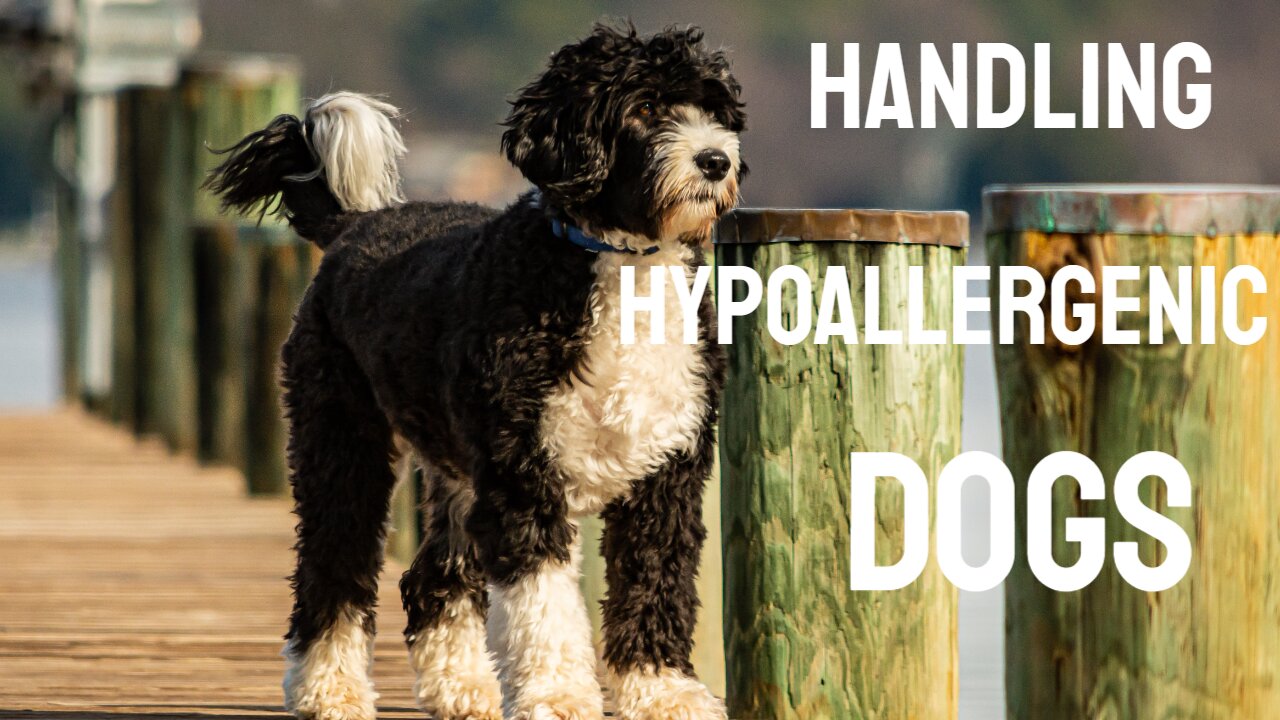Premium Only Content

Handling Hypoallergenic Dogs
Hypoallergenic dogs may appear ideal if you're a dog enthusiast who also suffers from allergies. Allergy sufferers should be assured that certain breeds produce far fewer allergens than others. It's worth noting that some people may still be sensitive to dogs, even if they're supposed to be hypoallergenic.
There are several steps you may take to reduce your vulnerability to an allergic response while interacting with a hypoallergenic dog. The first step is to keep your dog well-groomed. This entails grooming tasks such as combing their fur, clipping their nails, and wiping their ears. Regular grooming can reduce your dog's production of dander and other allergy triggers.
Keeping your house tidy is another vital step. You may lessen the number of allergens in your house by using air purifiers, vacuuming frequently, and cleaning your dog's bedding. To reduce your exposure to allergies, you should also keep your dog out of the bedroom and other sensitive parts of the house.
Do your homework and pick the perfect breed of hypoallergenic dog for you and your family if you're thinking about obtaining one. The poodle, the schnauzer, and the bichon frise are just a few examples of popular hypoallergenic breeds.
Nonetheless, it's worth noting that some people may still be sensitive to certain dog breeds because of individual variation.
In conclusion, hypoallergenic dogs are easier to care for, but they still require regular grooming, a clean environment, and the appropriate breed selection. Although no dog can be guaranteed to be entirely hypoallergenic, these measures should help lessen the likelihood of an allergic response. You should see your doctor and do some reading about hypoallergenic dogs if you're thinking about obtaining one.
-
 LIVE
LIVE
Astral Doge Plays!
1 hour agoZelda NES Randomizer ~LIVE!~ Let the Randomization Begin!
73 watching -
 33:18
33:18
Athlete & Artist Show
11 hours ago $2.28 earnedHockey Is Back In Europe!
20.7K3 -
 LIVE
LIVE
Total Horse Channel
4 hours ago2025 URCHA Futurity | Derby & Horse Show | Sunday
165 watching -
 LIVE
LIVE
GhillieSuitGaming
1 hour agoThe Evil Within 2: Part 4 - Art Destruction!
58 watching -
 LIVE
LIVE
Chi-Town Gamers Livestreams
1 hour agoGears 5 Ep. 4 W/ CTG | Into Kait's Mental Issues | GOW: RELOADED LATER & SHENANIGANS 😎
22 watching -
 LIVE
LIVE
Scottish Viking Gaming
4 hours agoSUNDAY FUNDAY :|: Still in the original packaging! Mint!
35 watching -
 2:20:14
2:20:14
LumpyPotatoX2
2 hours agoKOMPETE: Quick Gameplay - #RumbleGaming
8.65K1 -
 2:16:57
2:16:57
XxXAztecwarrior
3 hours agoSearching for more Reds!!
11.5K -
 2:44:34
2:44:34
TheItalianCEO
3 hours agoWhat about an Italian for breakfast?
16.1K1 -
 9:06
9:06
nospeedlimitgermany
1 day ago $1.54 earnedMercedes-Benz 500 SE W126 | 231 PS | Top Speed Drive German Autobahn No Speed Limit POV
19.3K5